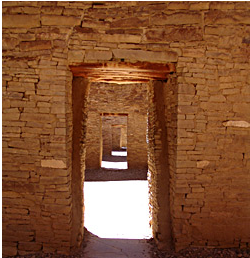Publication Date
7-5-2018
Abstract
In northern Thailand, previous zooarchaeological research suggests that hunter-gatherers consumed a broad diversity of animal resources during the Pleistocene-Holocene transition and afterwards (Gorman 1971a). This is a pattern characteristic of Kent Flannery’s (1969) “broad spectrum revolution” hypothesis. Based primarily on presence and absence evidence, faunal assemblages in northern Thailand typically include species of mammals, reptiles, birds, fish and shellfish, suggesting that prehistoric foragers consumed a wide range of taxa within this mainland Southeast Asian tropical environment. Although zooarchaeological analyses commonly identify this pattern within prehistoric cave and rockshelter sites, past investigations have 1) not attempted to formally test Flannery’s hypothesis, 2) understand the regional specifics of indigenous hunter-gatherer diets during this period, and 3) identify the role that foragers played in the ultimate mid Holocene transition to economies based on domesticated plants and animals.
In this research, I examine calibrated radiocarbon age distributions, mammalian stable isotope sequences and zooarchaeological data from four sites in northern Thailand – Spirit Cave (Tham Phii Maen), Steep Cliff Cave (Tham Phaa Can), Banyan Valley Cave (Tham Boong Hoong) and Non Nok Tha (Partridge Mound). I investigate whether a broad spectrum revolution occurred in northern Thailand throughout the late Pleistocene and Holocene, as well as how hunter-gatherer paleodemography, subsistence, and paleoenvironments influenced the mid Holocene transition to economies based on domesticated resources. Results suggest that hunter-gatherer demography generally increases, but fluctuates, throughout the late Pleistocene and Holocene and does not substantially increase during the Pleistocene-Holocene transition. There is no evidence for paleoenvironmental change during the Pleistocene-Holocene transition, and only minor evidence for possible reforestation during the mid Holocene. Finally, zooarchaeological evidence does not provide support for a broad spectrum revolution and instead suggests long-term, consistent and sustainable foraging of specific resources during the late Pleistocene and Holocene.
Keywords
Broad Spectrum Revolution, Thailand, Prehistory, Zooarchaeology, Paleodemography, Paleoenvironment
Project Sponsors
The UNM Office of Graduate Studies, UNM Department of Anthropology, the Project of Empowering Network for International Thai Studies, Institute of Thai Studies, Chulalongkorn University and the Thailand Research Fund, a Quaternary Research Association 14CHRONO Centre Radiocarbon Dating Award, a National Geographic Young Explorers Grant (9630-14) and a National Science Foundation Doctoral Dissertation Improvement Grant (1724202).
Document Type
Dissertation
Language
English
Degree Name
Anthropology
Level of Degree
Doctoral
Department Name
Anthropology
First Committee Member (Chair)
Emily Lena Jones
Second Committee Member
Lawrence G. Straus
Third Committee Member
Sherry V. Nelson
Fourth Committee Member
Ben Marwick
Recommended Citation
Conrad, Cyler Norman. "Mainland Southeast Asia in the Longue Durée: A Zooarchaeological Test of the "Broad Spectrum Revolution" in Northern Thailand." (2018). https://digitalrepository.unm.edu/anth_etds/149

